C4D in Humanitarian Action
- 23/09/2019


Given the increase in humanitarian and emergency situations related to disease outbreaks and public health emergencies, natural disasters, and refugee situations and violent conflict, UNICEF’s Communication for Development (C4D) Section is increasing efforts to synthesize and learn from these experiences. This allows the team to regularly inform technical support to national and local partners, facilitate cross-regional learning and strengthen its approach to humanitarian action and emergency response.
We are pleased to share the following UNICEF C4D case studies related to work done in Ghana, Guatemala, Nepal, Sierra Leone, Syria and Ukraine:
Ghana
Since the 1980s, Ghana has experienced sporadic outbreaks of cholera. The first major outbreak occurred in 1982, when about 15,032 cases were recorded. From 2014 to early 2015, the country experienced another devastating outbreak of cholera, with about 28,922 cases reported, including 243 deaths. The outbreak was widespread, with 130 out of 216 districts across 10 affected regions. The most affected areas were districts in southern Ghana. The 2014–2015 outbreak is regarded as the deadliest in Ghana’s history due to the number of cases involved. Though children suffered during the outbreak, the most affected age group was between 20 and 49 years, which represented about 70 per cent of all reported cholera cases. This case study looks at the role of C4D in tackling this health issue. DOWNLOAD
Guatemala
On 3 June 2018, at 3 p.m., the Fuego volcano in Guatemala erupted for the second time that year. The strong explosions sent columns of ash rising as high as 15,000 metres above sea level and pyroclastic flows moving west and southwest, according to the special volcanological bulletin issued by the National Coordinator for Disaster Reduction (CONRED).1 The most affected communities were those bordering the volcano: the departments of Escuintla, Sacatepéquez and Chimaltenango. Following the eruption, Guatemalan President Jimmy Morales declared a National Red Alert and a State of Calamity for the three departments.2 In the first week, 3,510 people were sheltered in 18 official sites in Escuintla and Sacatepéquez. This case study looks at how C4D was used in this response. DOWNLOAD
Nepal
The two devastating earthquakes that occurred in Nepal on 25 April and 12 May 2015 severely affected many regions within the country. Nearly 9,000 people lost their lives and over 22,000 people were injured. With a majority of houses being damaged or fully destroyed, people were forced to leave their homes and move to safe spaces or live in makeshift shelters. Many health centres and much of the community infrastructure, including water systems and latrines, were damaged or destroyed. The ensuing landslides blocked major roads and highways resulting in transportation being severely curtailed for authorities and relief agencies trying to reach affected districts and populations. All forms of communication and transportation were severely affected and telecommunication networks were disrupted in all the affected districts. This made it not only very difficult for communities to communicate with each other but also for government authorities, development agencies and aid workers to communicate with affected communities. DOWNLOAD
Sierra Leone
In the Inter-Agency Standing Committee (IASC) formal commitments to Accountability to Affected Populations (CAAPs) it was acknowledged that “communication with, and inclusion of, crisis-affected populations in the design and provision of humanitarian assistance are integral parts of achieving strengthened accountability to affected populations.” The case of UNICEF Sierra Leone’s response to the flooding and mudslide of August 2017 is a clear example of how the social messaging platform U-Report can be a powerful tool to keep the voice of community members at the heart of the design, implementation and course correction of humanitarian response programmes, and can enhance the broader C4D strategies to address the needs of and engage affected populations. DOWNLOAD
Syria
United Nations Office for the Coordination of Humanitarian Affairs (UN OCHA) estimates that 93,000 persons were evacuated from their homes following the fighting that started in February 2018 in East Ghouta, some 10 to 15 km from Damascus. These internally displaced persons (IDPs) were sent to seven shelters on the outskirts of Damascus. These shelters were empty structures such as schools and military camps that do not have the appropriate infrastructure to receive such large numbers of families. This case study looks at the role of C4D in issues relating to migration. DOWNLOAD
Ukraine
This case study looks specifically at the challenge of achieving social inclusion in the context of internal displacement of children and their families due to conflict in Eastern Ukraine. Anecdotal evidence shared from UNICEF-supported community centres and psychosocial outreach programmes shows that children and families are affected by the conflict, and IDPs in particular often suffer from intolerance and prejudiced attitudes among the host communities. These are manifested in interactions in places like schools and health facilities, for example. In fact, a UNICEF-supported survey on bullying among children has identified that IDP children are more likely to be bullied in schools, and that they are shyer and less communicative than their peers. DOWNLOAD




















